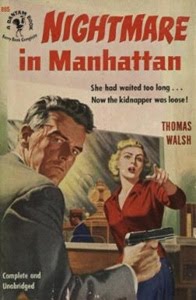 Apache Tears by Robert MacLeod
Apache Tears by Robert MacLeod
Pocket Book, Copyright 1973
I have always been fond of the western novels written by Robert MacLeod. I’ve read them when they were first published and have been revisiting them recently. I have always wondered whatever came of him. Searching, I find little information on the author. I hope he is still with us; his novels are well worth taking a look at.
The black rage took him like a dog with a rat, and shook him almost blind. He began to swear-vile, dirty obscenities he had almost never used, and got the lariat off the saddle and trotted toward the corral. Tomorrow was too long to wait. Eddie Burke had no right to live that long.
In “Apache Tears,” we are introduced to Neil Douglas, a hardened and loyal scout leader for the Cavalry at Camp Verde. Douglas is ending his tour with the army and there has been bad blood between him and the other scout leader, Sergeant Eddie Burke. Things reach a point where Douglas and Burke have it out in a fisticuffs brawl and Douglas, being an ex-boxer, whips him good. Recuperating, Eddie Burke vows retaliation. After his release from the army, The general of the post offers Douglas a job to escort archaeologist, Dr. Garnville Whitman and his daughter Jennie, to the ancient Citadel ruins. The pay is good, so Douglas accepts the offer to lead, make camp, and stay with them for the duration of their studies. As the days wear on, Douglas helps the shy Jennie to stand up to her father and show some independence. Jennie eventually falls for him. Douglas likes the girl, but his past associations with women have mostly been whores, and he’s a bit careful expressing his feelings. (But there is a spark, an affection is there) Eventually Eddie Burke and his albino Indian scout Whitey, arrive to settle things up with Douglas and they plan to do it through Dr. Whitman and the girl. Circumstances have forced Douglas to leave Jennie and her father alone at the site, while Burke advances with thoughts of murder and threats of rape. Enraged by failing to protect Jennie, Neil Douglas is now alone where he is at his best, and vows revenge seeking the impious Burke and Whitey.
Robert MacLeod as always, gives the reader an excellent insight on the western way of life. He shows how this life was hard and uncertain, especially with the dangers encountered by army scout leaders and the Indians who work under them. Through the character of Jennie, we see a girl of society who came west, and must be shaded from the harsh life and ills that women here resort to. The relationship between Jennie and Neil is wonderfully told. Jennie -who finally loses her shyness and can now express herself; and Neil -who teaches her how to do this but can’t express his own feelings to her. MacLeod likes to mix real western figures in his stories. In this one we have General George Crook, Mickey Free (who pops up in many MacLeod novels) and even a later reference to George Custer. There is the constant conflict between Douglas and Burke, which carries over between the Indian scouts that they lead. These were tough seasoned men, who must be brutal to survive alone in this hostile territory.
The bodies would be stinking too much if they lay in the heat all day tomorrow. “Let the coyotes have them!” “No” Neil said, “The smell isn’t anything new to you. Major Trumbull won’t believe us, without the bodies.”…Later the Apache scouts lugged the sacks over and dumped out five tangled-haired, bloody Apache heads.”
This is another Robert MacLeod western that I thoroughly enjoyed. Highly entertaining and well written. For some reason, it seems he’s been an underrated author and overshadowed by others. I never understood why. Robert MacLeod's western novels were some of the best published during the 60s and 70s.
Known westerns by Robert MacLeod:
The Californio (1966) Gold Medal
The Muleskinner (1967) Gold Medal
The Running Gun (1969) Gold Medal
Ambush at Junction Rock (1970) Gold Medal
Six Guns South (1972) Gold Medal
Apache Tears (1973) Pocket Book
Feather in the Wind (1976) Pocket Book



























